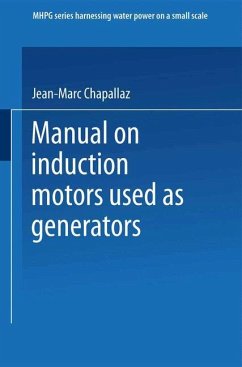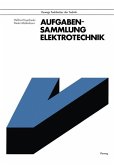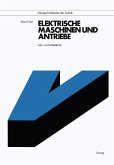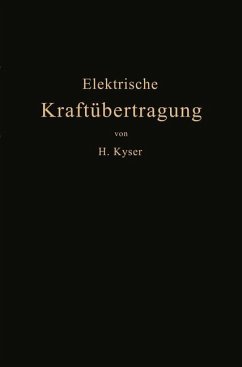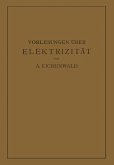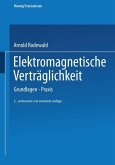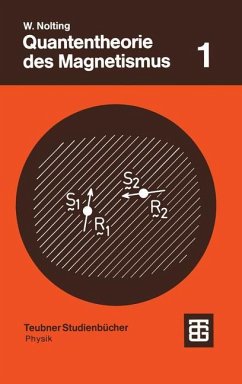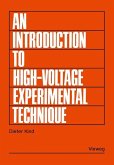Jean-Marc Chapallaz, Jacques Dos Ghali, Peter Eichenberger
Manual on Induction Motors Used as Generators
A Publication of Deutsches Zentrum für Entwicklungstechnologien ¿ GATE A Division of the Deutsche Gesellschaft für Technische Zusammenarbeit (GTZ) GmbH
Jean-Marc Chapallaz, Jacques Dos Ghali, Peter Eichenberger
Manual on Induction Motors Used as Generators
A Publication of Deutsches Zentrum für Entwicklungstechnologien ¿ GATE A Division of the Deutsche Gesellschaft für Technische Zusammenarbeit (GTZ) GmbH
- Broschiertes Buch
- Merkliste
- Auf die Merkliste
- Bewerten Bewerten
- Teilen
- Produkt teilen
- Produkterinnerung
- Produkterinnerung
Manual on Induction Motors used as Generators
Andere Kunden interessierten sich auch für
![Aufgabensammlung Elektrotechnik Aufgabensammlung Elektrotechnik]() Hellmut KruschwitzAufgabensammlung Elektrotechnik74,99 €
Hellmut KruschwitzAufgabensammlung Elektrotechnik74,99 €![Elektrische Maschinen und Antriebe Elektrische Maschinen und Antriebe]() Klaus FuestElektrische Maschinen und Antriebe74,99 €
Klaus FuestElektrische Maschinen und Antriebe74,99 €![Die elektrische Kraftübertragung Die elektrische Kraftübertragung]() Herbert KyserDie elektrische Kraftübertragung54,99 €
Herbert KyserDie elektrische Kraftübertragung54,99 €![Vorlesungen über Elektrizität Vorlesungen über Elektrizität]() A. EichenwaldVorlesungen über Elektrizität79,99 €
A. EichenwaldVorlesungen über Elektrizität79,99 €![Elektromagnetische Verträglichkeit Elektromagnetische Verträglichkeit]() Arnold RodewaldElektromagnetische Verträglichkeit69,99 €
Arnold RodewaldElektromagnetische Verträglichkeit69,99 €![Quantentheorie des Magnetismus Quantentheorie des Magnetismus]() Wolfgang NoltingQuantentheorie des Magnetismus64,99 €
Wolfgang NoltingQuantentheorie des Magnetismus64,99 €![An Introduction to High-Voltage Experimental Technique An Introduction to High-Voltage Experimental Technique]() Dieter KindAn Introduction to High-Voltage Experimental Technique54,99 €
Dieter KindAn Introduction to High-Voltage Experimental Technique54,99 €-
-
-
Manual on Induction Motors used as Generators
Hinweis: Dieser Artikel kann nur an eine deutsche Lieferadresse ausgeliefert werden.
Hinweis: Dieser Artikel kann nur an eine deutsche Lieferadresse ausgeliefert werden.
Produktdetails
- Produktdetails
- Verlag: Vieweg+Teubner / Vieweg+Teubner Verlag
- Artikelnr. des Verlages: 978-3-528-02068-2
- 1992
- Seitenzahl: 232
- Erscheinungstermin: 1. Januar 1992
- Deutsch
- Abmessung: 235mm x 155mm x 13mm
- Gewicht: 361g
- ISBN-13: 9783528020682
- ISBN-10: 3528020687
- Artikelnr.: 41307946
- Herstellerkennzeichnung Die Herstellerinformationen sind derzeit nicht verfügbar.
- Verlag: Vieweg+Teubner / Vieweg+Teubner Verlag
- Artikelnr. des Verlages: 978-3-528-02068-2
- 1992
- Seitenzahl: 232
- Erscheinungstermin: 1. Januar 1992
- Deutsch
- Abmessung: 235mm x 155mm x 13mm
- Gewicht: 361g
- ISBN-13: 9783528020682
- ISBN-10: 3528020687
- Artikelnr.: 41307946
- Herstellerkennzeichnung Die Herstellerinformationen sind derzeit nicht verfügbar.
1. Introduction and Overview.- 2. The Concept of Induction Motors Used as Generators.- 3. Theory of the Three-Phase Induction Machine.- 4. Selecting an Induction Motor to be Used as a Generator.- 5. Operation and Control.- 6. Safety and Protection.- 7. Economic Considerations.- 8. Worked Examples.- Appendices:.- Appendix A: Basic Theory of Electrical Engineering.- 1. Introduction.- 1.1 Electrical Circuit.- 1.2 Voltage.- 1.3 Current.- 1.4 Effects of Current Flow.- 1.5 Power.- 2. Direct Current (DC).- 2.1 Resistance.- 2.1.1 General Formulae.- 2.1.2 Ohm's Law.- 2.1.3 Power Losses - Joule's Law.- 2.1.4 Connection of Resistances.- 2.2 Capacitance of Capacitors.- 2.2.1 General.- 2.2.2 Capacitance.- 2.2.3 Variation of Current and Voltage.- 2.2.4 Stored Energy of a Capacitor.- 2.2.5 Connection of Capacitors.- 3. Magnetism - Electromagnetism.- 3.1 Effects of Magnetism.- 3.2 Magnetism and Electric Current.- 3.3 Magnetic Flux and Magnetic Flux Density.- 3.4 Magnetic Characteristic - Magnetization Curve.- 3.5 Generation of an Electromagnetic Force.- 4. Induced Voltage.- 4.1 General.- 4.2 Self-induction.- 4.3 Transformer Induced Voltage.- 4.4 Eddy Currents.- 5. Inductance.- 5.1 Definition.- 5.2 Connection of Inductances.- 5.2.1 Inductors in series.- 5.2.2 Inductors in parallel.- 6. DC Generators and Motors.- 6.1 Working Principle of a DC Generator.- 6.2 Working Principle of a DC Motor.- 7. Alternating Current (AC).- 7.1 Advantages of Alternating Current.- 7.2 Characteristics of the AC signal.- 7.3 Phasor Diagrams.- 7.4 Notations and Definitions.- 7.5 Power in AC.- 7.6 Power factor, cosf.- 7.7 Circuit Elements in AC.- 7.7.1 Pure Resistive Circuit.- 7.7.2 Pure Inductive Circuit.- 7.7.3 Pure Capacitive Circuit.- 7.8 Impedance Z in Series Connections.- 7.9 Impedance Z inParallel Connections.- 7.10 Resonance.- 7.10.1 Resonance for series connection of L and C.- 7.10.2 Resonance for parallel connection of L and C.- 7.11 Correction of the Power Factor cos ph.- 7.11.1 General.- 7.11.2 Calculation of the Compensating Capacitance.- 8. Three-Phase System.- 8.1 General.- 8.2 Generating Three-Phase Voltage and Current.- 8.3 Connections.- 8.3.1 Definitions.- 8.3.2 Star or Wye Connection.- 8.3.3 Delta Connection.- 8.3.4 Power in three-phase systems.- 8.3.5 Conclusion.- 8.4 Rotor Speed and Generated Frequency.- 8.5. Three-Phase Systems and Consumer Load.- 8.6 Power Factor Correction in Three-Phase Systems.- 9. Voltage Drop and Conductor Size.- 9.1 General.- 9.2 Voltage Drop in DC.- 9.3 Voltage Drop in Single-Phase AC.- 9.3.1 Considering line resistance only.- 9.3.2 Considering resistance and inductance of a line.- 9.4 Voltage Drop in Three-Phase AC.- 10. Answers to the Examples.- 10.1 Example 1 / page 120.- 10.2 Example 2 / page 124.- 10.3 Example 3 / page 125.- 10.4 Example 4 / page 164.- 10.5 Example 5 /page 173.- 10.6 Example 6 /page 174.- 10.7 Example 7 /page 177.- Appendix B: Selected Diagrams and Tables for Electrical Engineering Design.- Bl) Standard Wire and Cable Sections and Permissible Currents (Heating).- B2) End-use appliances and their approximate power demand.- B3) Efficiency and cos (J) versus power for induction motors.- B4) Slip versus power for induction machines (non-saturated motors).- B5) General range of efficiencies for synchronous generators.- B6) General range of efficiencies for transmission gearings (flat and V-belts, gearboxes).- B7) Turbine types and specific speeds in function of head and flow.- B8) Turbine efficiencies (at nominal flow).- B9) Turbine efficiencies (at part flow).- Appendix C: No-Load and Blocked-Rotor Tests and Determination of the Circle Diagram.- 1. General.- 2. Measurement of stator resistance.- 3. No-Load Test.- 4. Blocked-Rotor Test.- 5. Determination of the Circle.- 6. Example.- 6.1 Motor data (from rating plate):.- 6.2 Motor resistances (using an ?-meter).- 6.3 No-load test.- 6.4 Blocked-rotor test.- 6.5 Determination of the circle.- Appendix D: Measuring Techniques and Required Equipment.- 1. Accuracy of Measurements.- 2. Voltage Measurement.- 3. Current Measurement.- 4. Active Power Measurement by Means of Wattmeters.- 4.1 Principle of a Wattmeter.- 4.2 Current Transformer.- 4.3 The Constant of a Wattmeter.- 4.4 Active Power Measurement in a Three-Phase System.- 4.4.1 By Means of a Single Wattmeter.- 4.4.2 By Means of Three Wattmeters.- 4.4.3 By Means of Two Wattmeters - Connection according to Aron.- 5. Active Power Measurement by Means of a kW-Hour Meter.- 6. Portable Instruments - Multimeters.- Appendix E: List of Manufacturers of Induction Generator Controllers.- Appendix F: References.
1. Introduction and Overview.- 2. The Concept of Induction Motors Used as Generators.- 3. Theory of the Three-Phase Induction Machine.- 4. Selecting an Induction Motor to be Used as a Generator.- 5. Operation and Control.- 6. Safety and Protection.- 7. Economic Considerations.- 8. Worked Examples.- Appendices:.- Appendix A: Basic Theory of Electrical Engineering.- 1. Introduction.- 1.1 Electrical Circuit.- 1.2 Voltage.- 1.3 Current.- 1.4 Effects of Current Flow.- 1.5 Power.- 2. Direct Current (DC).- 2.1 Resistance.- 2.1.1 General Formulae.- 2.1.2 Ohm's Law.- 2.1.3 Power Losses - Joule's Law.- 2.1.4 Connection of Resistances.- 2.2 Capacitance of Capacitors.- 2.2.1 General.- 2.2.2 Capacitance.- 2.2.3 Variation of Current and Voltage.- 2.2.4 Stored Energy of a Capacitor.- 2.2.5 Connection of Capacitors.- 3. Magnetism - Electromagnetism.- 3.1 Effects of Magnetism.- 3.2 Magnetism and Electric Current.- 3.3 Magnetic Flux and Magnetic Flux Density.- 3.4 Magnetic Characteristic - Magnetization Curve.- 3.5 Generation of an Electromagnetic Force.- 4. Induced Voltage.- 4.1 General.- 4.2 Self-induction.- 4.3 Transformer Induced Voltage.- 4.4 Eddy Currents.- 5. Inductance.- 5.1 Definition.- 5.2 Connection of Inductances.- 5.2.1 Inductors in series.- 5.2.2 Inductors in parallel.- 6. DC Generators and Motors.- 6.1 Working Principle of a DC Generator.- 6.2 Working Principle of a DC Motor.- 7. Alternating Current (AC).- 7.1 Advantages of Alternating Current.- 7.2 Characteristics of the AC signal.- 7.3 Phasor Diagrams.- 7.4 Notations and Definitions.- 7.5 Power in AC.- 7.6 Power factor, cosf.- 7.7 Circuit Elements in AC.- 7.7.1 Pure Resistive Circuit.- 7.7.2 Pure Inductive Circuit.- 7.7.3 Pure Capacitive Circuit.- 7.8 Impedance Z in Series Connections.- 7.9 Impedance Z inParallel Connections.- 7.10 Resonance.- 7.10.1 Resonance for series connection of L and C.- 7.10.2 Resonance for parallel connection of L and C.- 7.11 Correction of the Power Factor cos ph.- 7.11.1 General.- 7.11.2 Calculation of the Compensating Capacitance.- 8. Three-Phase System.- 8.1 General.- 8.2 Generating Three-Phase Voltage and Current.- 8.3 Connections.- 8.3.1 Definitions.- 8.3.2 Star or Wye Connection.- 8.3.3 Delta Connection.- 8.3.4 Power in three-phase systems.- 8.3.5 Conclusion.- 8.4 Rotor Speed and Generated Frequency.- 8.5. Three-Phase Systems and Consumer Load.- 8.6 Power Factor Correction in Three-Phase Systems.- 9. Voltage Drop and Conductor Size.- 9.1 General.- 9.2 Voltage Drop in DC.- 9.3 Voltage Drop in Single-Phase AC.- 9.3.1 Considering line resistance only.- 9.3.2 Considering resistance and inductance of a line.- 9.4 Voltage Drop in Three-Phase AC.- 10. Answers to the Examples.- 10.1 Example 1 / page 120.- 10.2 Example 2 / page 124.- 10.3 Example 3 / page 125.- 10.4 Example 4 / page 164.- 10.5 Example 5 /page 173.- 10.6 Example 6 /page 174.- 10.7 Example 7 /page 177.- Appendix B: Selected Diagrams and Tables for Electrical Engineering Design.- Bl) Standard Wire and Cable Sections and Permissible Currents (Heating).- B2) End-use appliances and their approximate power demand.- B3) Efficiency and cos (J) versus power for induction motors.- B4) Slip versus power for induction machines (non-saturated motors).- B5) General range of efficiencies for synchronous generators.- B6) General range of efficiencies for transmission gearings (flat and V-belts, gearboxes).- B7) Turbine types and specific speeds in function of head and flow.- B8) Turbine efficiencies (at nominal flow).- B9) Turbine efficiencies (at part flow).- Appendix C: No-Load and Blocked-Rotor Tests and Determination of the Circle Diagram.- 1. General.- 2. Measurement of stator resistance.- 3. No-Load Test.- 4. Blocked-Rotor Test.- 5. Determination of the Circle.- 6. Example.- 6.1 Motor data (from rating plate):.- 6.2 Motor resistances (using an ?-meter).- 6.3 No-load test.- 6.4 Blocked-rotor test.- 6.5 Determination of the circle.- Appendix D: Measuring Techniques and Required Equipment.- 1. Accuracy of Measurements.- 2. Voltage Measurement.- 3. Current Measurement.- 4. Active Power Measurement by Means of Wattmeters.- 4.1 Principle of a Wattmeter.- 4.2 Current Transformer.- 4.3 The Constant of a Wattmeter.- 4.4 Active Power Measurement in a Three-Phase System.- 4.4.1 By Means of a Single Wattmeter.- 4.4.2 By Means of Three Wattmeters.- 4.4.3 By Means of Two Wattmeters - Connection according to Aron.- 5. Active Power Measurement by Means of a kW-Hour Meter.- 6. Portable Instruments - Multimeters.- Appendix E: List of Manufacturers of Induction Generator Controllers.- Appendix F: References.

